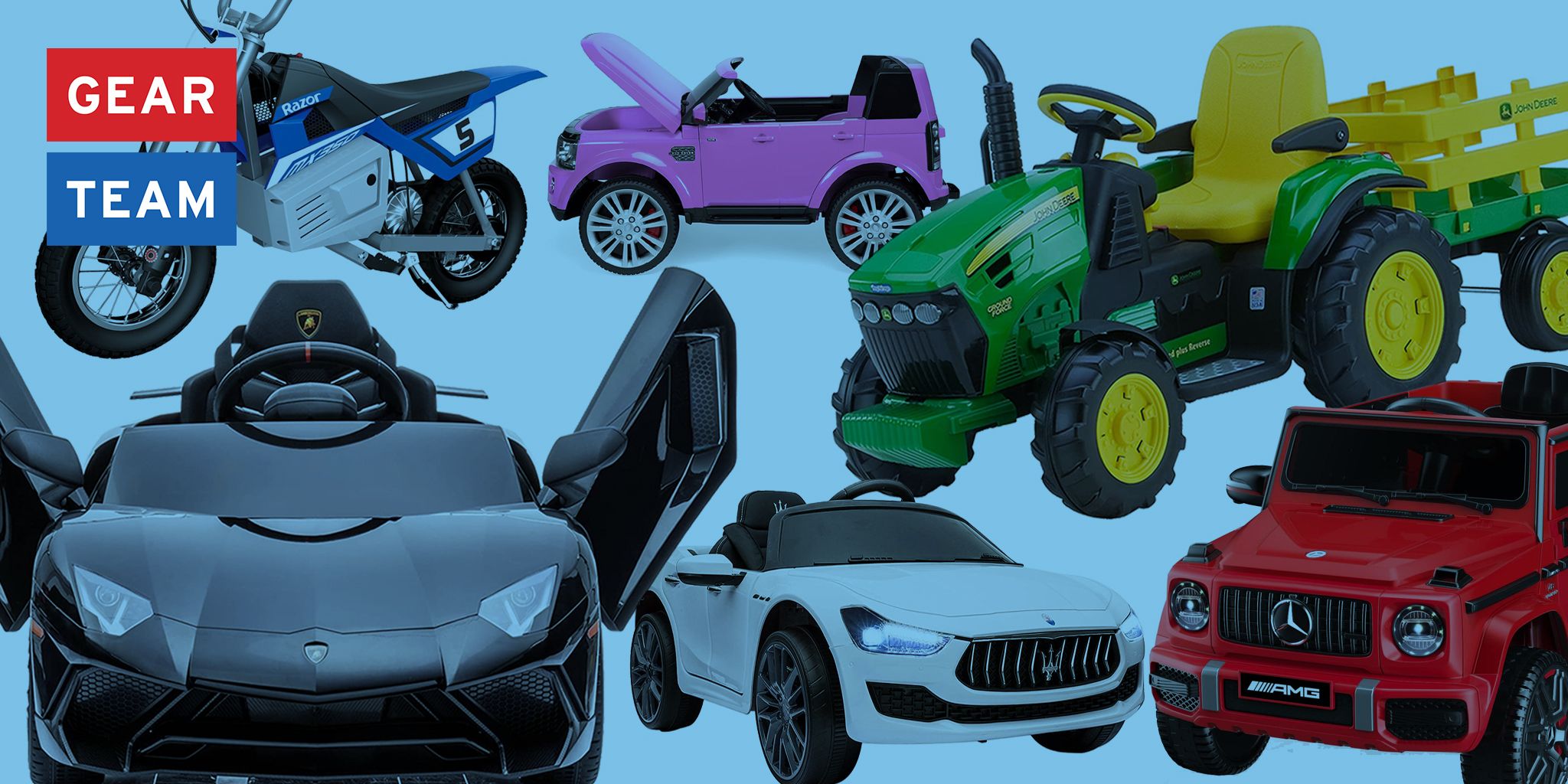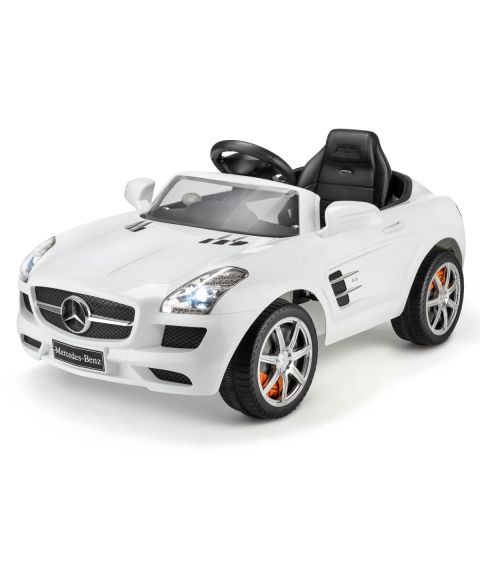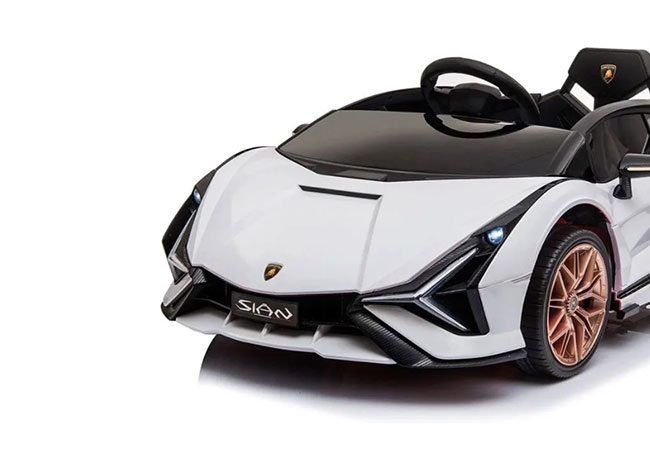Great Info To Deciding On Electric Kids Cars
Wiki Article
What Should You Look For Ride-On Vehicles That Are Suitable For Younger Toddlers And Older Children?
Consider the child's age, their size and developmental stage when considering ride-on vehicles for kids. This is to be sure they're secure and will have fun. Consider these factors:
Younger Toddlers (1 to 3 years old) Choose ride-on vehicles specifically made for this age group. They usually have an upright and low-to-the-ground style as well as easy-to-use controls. basic features like steering wheels, buttons, or levers. Choose ride-on vehicles with a wide base to provide maximum stability and to decrease the risk of tipping.
Children who are older (3and older) - As your child gets older is expected to be able to operate more sophisticated rides that have added features and controls. Look for cars with seats that can be adjusted as well as larger capacity for weight. Also look for features that are interactive, such as working lights, sound and music. You should look for ride-ons with the ability to alter the speed setting or parental controls to guarantee safety and allow for different skill levels.
Size
Height and weight - Take your child's height and weight into consideration when choosing a ride-on car. Pick a car with a the weight and height that is comfortable for your child. Beware of cars that are too big or too small. They could cause discomfort and even danger.
Comfort and legroom Make sure that your child has enough room to sit comfortably inside the vehicle. The dimensions of the seating space should be appropriate to the height and size of your child.
Developmental Stage
Motor Skills- Take into consideration your child's abilities in regards to coordination, motor skills, and balance when choosing a car. While toddlers of a younger age will require more control to operate the car, older kids can handle more complex controls and interactive features.
Independence and Confidence - Ride-on vehicles can foster confidence and independence in children, by teaching them to manage their car and navigate. Choose a vehicle that will allow your child to learn how to steer, accelerate, and brake on their own. This will help build their motor skills and confidence in the course of time.
Interest and Engagement: When selecting a ride-on for your child, you should consider the interests and preferences of your child. Pick a car with themes or colors that will appeal to your child's preferences, whether it's a classic car or sports car, truck, or themed character vehicle.
If you think about your child's age, size, and their development stage, then select a vehicle that is enjoyable and secure. Your child can have endless hours of enjoyment as they explore. View the most popular kids cars for more advice including kiddies cars, kidscars, toy with car, toy car, electric car ride, toy car toy car, toy car toy car, electric rideons, kids electric cars, two seater childrens electric cars and more. .

What Kind Of Maintenance And Assembly Requirements Are There For Kid's Ride-On Vehicles?
The ride-on vehicles for kids typically need periodic maintenance and assembly to ensure optimal performance as well as safety and longevity. Here are the common maintenance and assembly requirements for kids' rides-on-cars.
Most ride-on cars arrive in partially assembled condition and need to be assembled upon arrival. This usually involves attaching the components such as the wheels, seats, steering wheel and other components according to the manufacturer's instructions.
Follow the assembly directions carefully and ensure that every component is securely secured. As directed, complete the assembly using the tools and hardware provided.
Cleaning
It is important to clean the vehicle's ride-on frequently to ensure its appearance and performance. Make use of a soft cloth or sponge soaked in moderate soap and water to wash down the exterior surfaces taking off dust, dirt and other debris.
Attention should be given to areas that are susceptible to accumulation like the wheels, tire and undercarriage. To get rid of stubborn dirt and grime, use a toothbrush or a brush to get into areas that are hard to reach.
Avoid making use of harsh chemicals, abrasive cleaners, or high-pressure water spritzers, because they can damage the paint or electronic parts of the ride-on vehicle.
Battery Care
To maintain performance and to prolong the life of a ride-on battery, it is crucial to take good care of the battery. Here are some guidelines on battery care.
Make sure to fully charge your battery prior to the first use and every time you utilize it to ensure the longest running time.
Beware of charging batteries too much or leaving them connected to chargers for extended time. This could damage batteries and decrease their lifespan.
If not in use When not in use, keep the ride-on battery and car away from direct sunlight or extreme temperatures.
Check the battery terminals periodically to see if they are damaged or corroded. Clean them if required by using a wirebrush or terminal cleaner.
Replace the battery if it does not hold any charge or displays signs that it has been damaged or diminished.
Tire Maintenance -
Check the tires regularly to find any indications such as wear, damage or the loss of pressure. If needed, inflate the tire up to recommended pressure using a bike compressor or pump.
Examine the tread pattern and see whether there is any foreign object or debris which could lead to flats or punctures. Repair or replace damaged tires if necessary. Eliminate obstructions.
Lubricate your wheel bearings and axles to ensure smooth movement.
Repair or replace components as needed -
Even with routine maintenance, it's likely that the ride-on vehicles need to be repaired or parts replaced due to wear and tear or accidents.
Keep an eye out for signs that your system is malfunctioning or becoming damaged, including strange noises or behavior or power loss, as well as other anomalies. You can consult the user manual or call customer support to get help with repair and troubleshooting.
Replace worn-out or damaged components promptly to stop any further damage, and ensure the safety and efficiency of the ride-on car.
You can make sure your kid's rideon car is in good working order by adhering to these assembly and maintenance guidelines. Your child will enjoy numerous hours of safe fun and exciting time. Have a look at the most popular click here about kids cars for more info including childrens digger, digger ride, electric ride on, toy a car, electric ride on cars, remote control childrens car, childrens ride on, ride of car, toy the car, car on ride and more. .

What Should I Think About Prior To Buying An Electric Car For My Kid? What Are Pros And Con?
Before buying an electric kids' car There are a variety of things to think about to make sure you choose the right car for your child's needs and preferences. Here are some key considerations, along with information on sizes, prices, pros, and cons - Age and Size of the Child -
When choosing an electric child's vehicle, be aware of the age and height of your child. Smaller and younger children might prefer lightweight and compact models, while older or larger children may require larger vehicles with larger spaces to seat them comfortably.
Car size and weight -
Electric cars for kids come in a range of dimensions. They range from micro-sized replicas to large-scale replicas. Be aware of the dimensions and weight of the car in relation to your child's strength, age and size.
Price Range
The cost of electric children's automobiles can differ widely based on factors such as the size, features, brands, and build quality. Prices for micro-sized versions range from $50 to 200 and larger replicas can range from $600 to $800.
Pros and Cons -
Pros -
Children's electric cars offer endless hours of fun, imaginative play, and the chance to control their own car.
Motor Skill Development. Driving an electric car can help children improve their spatial awareness, coordination, and fine motor skill.
Electric automobiles encourage physical activity and outdoor playing. They promote the pursuit of exercise and adventure.
Realistic Features: Many electronic children's cars have realistic details such as working headlights, horns as well as MP3 player compatibility. This enhances the play experience.
Cons
Electric cars that are of high-quality cost a lot, particularly when you buy licensed replicas.
Battery Life - Electric vehicles depend on rechargeable batteries to provide power. These batteries can have limited run time and require frequent recharge.
Safety Concerns - Electric cars can pose safety risks which include falls, collisions, and entrapment, if not used responsibly and with the supervision of an adult.
Maintenance and Assembly: Certain electric vehicles require assembly before they arrive, and also require regular maintenance that includes repairs and maintenance of the battery.
Accessories and Features
Consider the features of the electric car for kids. This includes working headlights as well as horns for the parents, parental remote controls, seat belts and storage compartments. Select a car that has features that are suitable for your child's preferences and interests.
Finality, the most effective electric cars for kids will be determined by factors such as their age (or size) along with their interests and their budget. Make sure you study and compare various models, read reviews, and think about the pros and cons before making a decision. See the recommended kids cars kidscars.co.uk recommendations for website examples including toy cars toy car, car for toy, remote control childrens electric cars, toy cars, childrens ride on, kidscars, toy and car, ride ons, kids electric cars, childrens ride on and more. .
